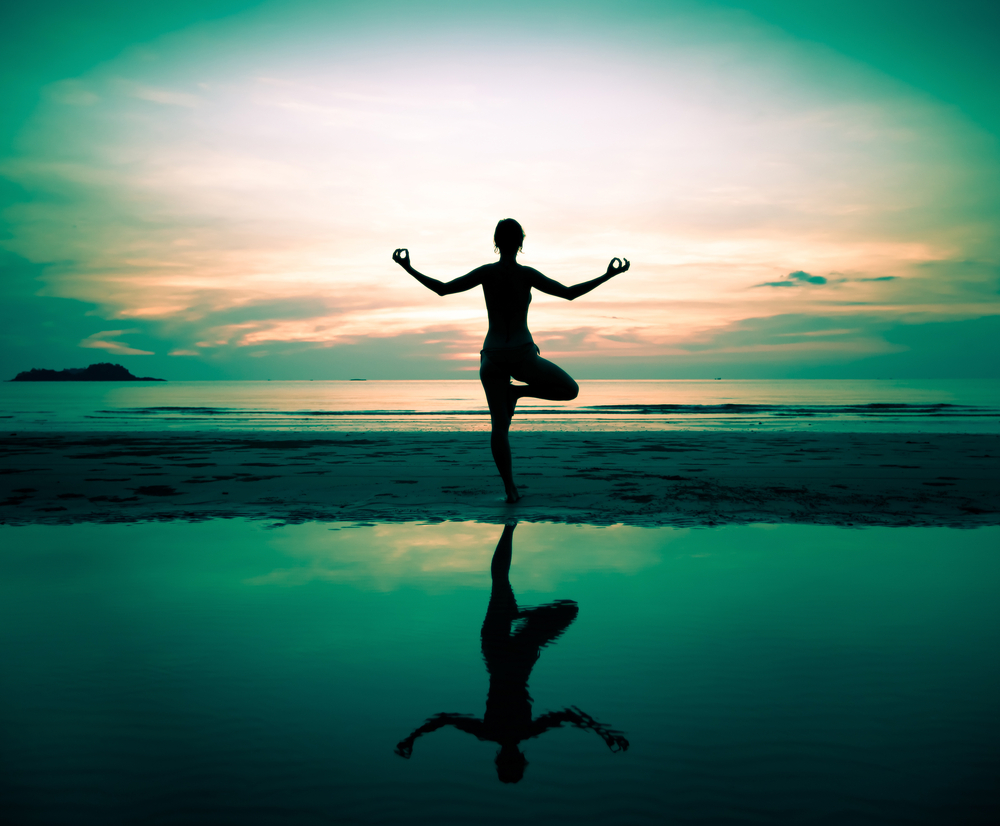Yoga has characteristics that are suitable for many. Group classes are usually held in a safe and non-competitive environment. Yoga requires no special skills. It almost instantly facilitates mental and muscular relaxation. Practiced on a regular basis, Yoga helps develop flexibility, treat many musculoskeletal problems, relieve serious health problems and promote better overall health.
A part of a whole…
Developed in India over several millennia, Yoga (in a broad sense) is a comprehensive method of personal development and a science of spiritual practice. The system of classical Yoga was compiled by Patanjali in the Yoga Sutras, based on older traditions going back to Vedic times. The living science of Yoga has been organized into many different paths or approaches over the centuries. There are numbers of them, eight of which have gained prominence in the Hindu culture of India. All forms are practices to accelerate the process of yoga, or what the Bhagavad Gita refers to as, “the science of creating union between the Individual Consciousness with the Ultimate Consciousness.”
- Hatha Yoga: Yoga of postures (asanas) to awaken the physical and mental forces
- Raja Yoga: Yoga of self discipline and practice (Ashtanga or 8 Limbs Yoga)
- Bakhti Yoga: Yoga of devotion (puja: rituals, kirtan: songs, japa: mantras, upasana: meditation)
- Jnana Yoga: Yoga of knowledge and wisdom
- Karma Yoga: Yoga of service and selfless action
- Tantra Yoga: Yoga of connection with others and the universe
- Kriya Yoga: Yoga of technique, force, balance and self transformation
- Kundalini Yoga: Yoga of awakening of the energy centers or chakras
The most popular schools of Yoga
Each Yoga style combines postures, breathing exercises and meditation in an energetic or gentle manner, lively or calm. Here are the most common ones in the West:
- Anusara: A new form of Yoga founded in 1997 by John Friend . It quickly popularized and is now present in 70 countries. Its basic philosophy is to celebrate the heart and see the good in every person and every thing.
- Ashtanga: Founded by Shri Patthabi Jois, it is a dynamic, flowing sequence of set poses that links the movements with the breath. It is also called “Power Yoga.” This significantly boosts the metabolism and raises body temperature. Excellent for endurance.
- Bikram: Founded by Bikram Choudry, it a type of Hatha Yoga characterized by a set series of postures and breathing exercises, performed in a room heated to a very high temperature (about 85°F).
- Integral: Designed in the United States in the 1960’s by Swami Satchidanada, it offers a balanced integration of postures, respiration, meditation and relaxation. It encourages self awareness.
- Iyengar: Disciplined and rigorous classes developped by B.K.S. Iyengar that has an emphasis on detail, precision and alignment in the performance of posture and breath control. The development of strength, mobility and stability is gained through the asanas.
- Kundalini: Founded by Sikh Yogi Bhajan, it is an ancient esoteric practice designed to awaken the vital energy (Kundalini) that lies dormant at the base of the spine. This approach works on the meditative consciousness through sequences of postures, and the primary focus is on the breath.
- Sivananda or Vedanta: Founded by Vishnu Devananda (a disciple of Swami Sivananda), it emphasizes positive thinking, meditation, breathing, relaxation and diet. Classes are relaxed and gentle. The spiritual aspect is very present.
- Viniyoga: Founded by T.K.V. Desikarchar, it focuses on the need of the individual (postures are modified to suit the student) and includes postures, chanting, breathing and meditation. Classes are gentle and focus is on the breath.
The different flows of Yoga
- Yin Yoga: It is a very slow-paced yoga. Each asana is held for about 5 to 15 minutes and various props are used (blocks, blankets, straps, cushions) as support for the pose, with combinations of slow and deep breaths. Perfect for relieving stress, anxiety and physical tensions, it will improve your flexibility, focus and allow you to completely let go.
- Hatha Yoga: Generally a slow-paced yoga, it is a sequence of asanas, held for about 3 minutes, combining control of the breath (Pranayama) and concentration. Perfect for a moderate flow and stretching.
- Power Yoga: A offshoot of Ashtanga yoga, it is a fast-paced yoga with a dynamic sequence of postures and rigorous training. It is a fitness-based vinyasa practice, so it will move quickly and make you sweat (most classes are held in a heated room). Perfect for building strength and flexibility.
- Vinyasa Yoga: A very fast-paced yoga which is all about movement. It also takes its cues from Ashtanga yoga, although allowing more freedom and creativity. It involves synchronizing the breath with a continuous flow of postures. Perfect for building endurance, flexibility and strength.
I mostly practice Hatha, Ashtanga and Vinyasa yoga and I encourage you to try and incorporate many different types of yoga in your daily practice as well.
Health Benefits of Yoga
Regular yoga practice (approximately 30 to 60 minutes a day) will create multiple and noticeable benefits to your health. Lower blood pressure, greater flexibility, enhanced brain function, lower cholesterol, better skeletal alignment, strengthened bones and joints, weight loss, decreased stress, deeper peace of mind, mental focus, mind-body integration, deeper spirituality, happiness and inner peace…the list is endless.
Find an amazing article about the many health benefits of Yoga here.
Yoga will transform your life, improve your health, your flexibility, your mental and physical stamina, through postures, breathing, relaxation, concentration, meditation…
How Yoga Changes Your Body, Starting The Day You Begin:


